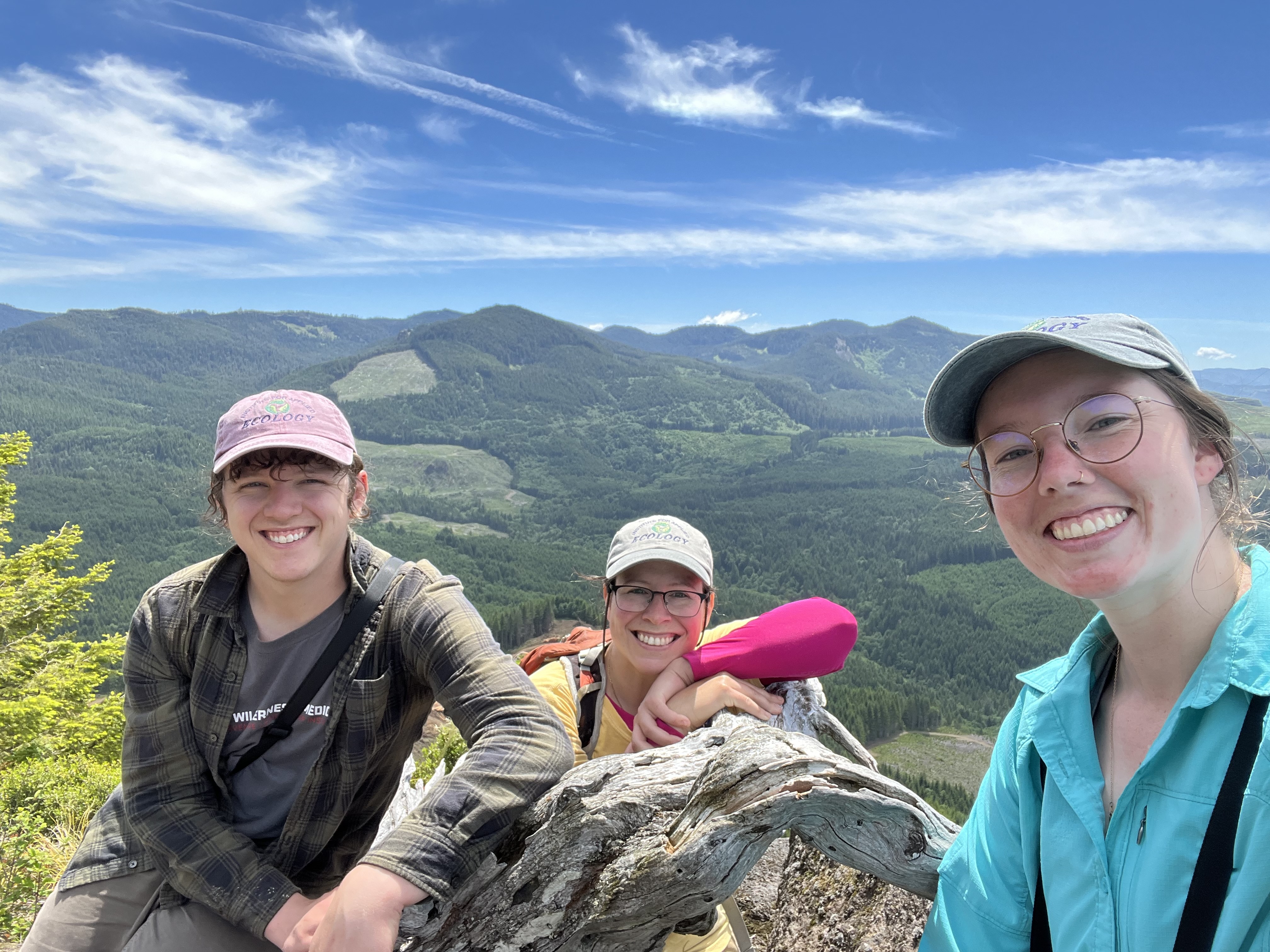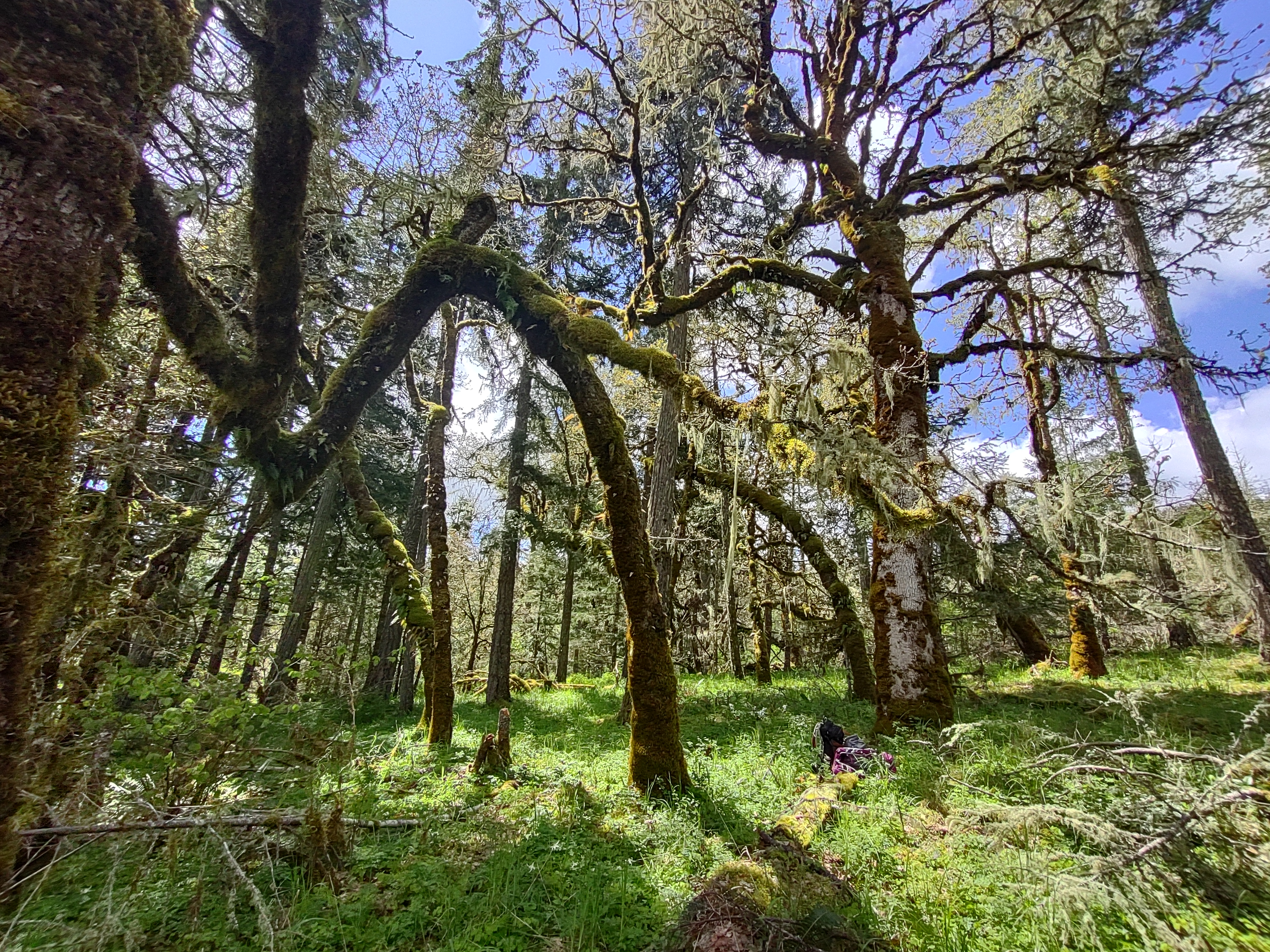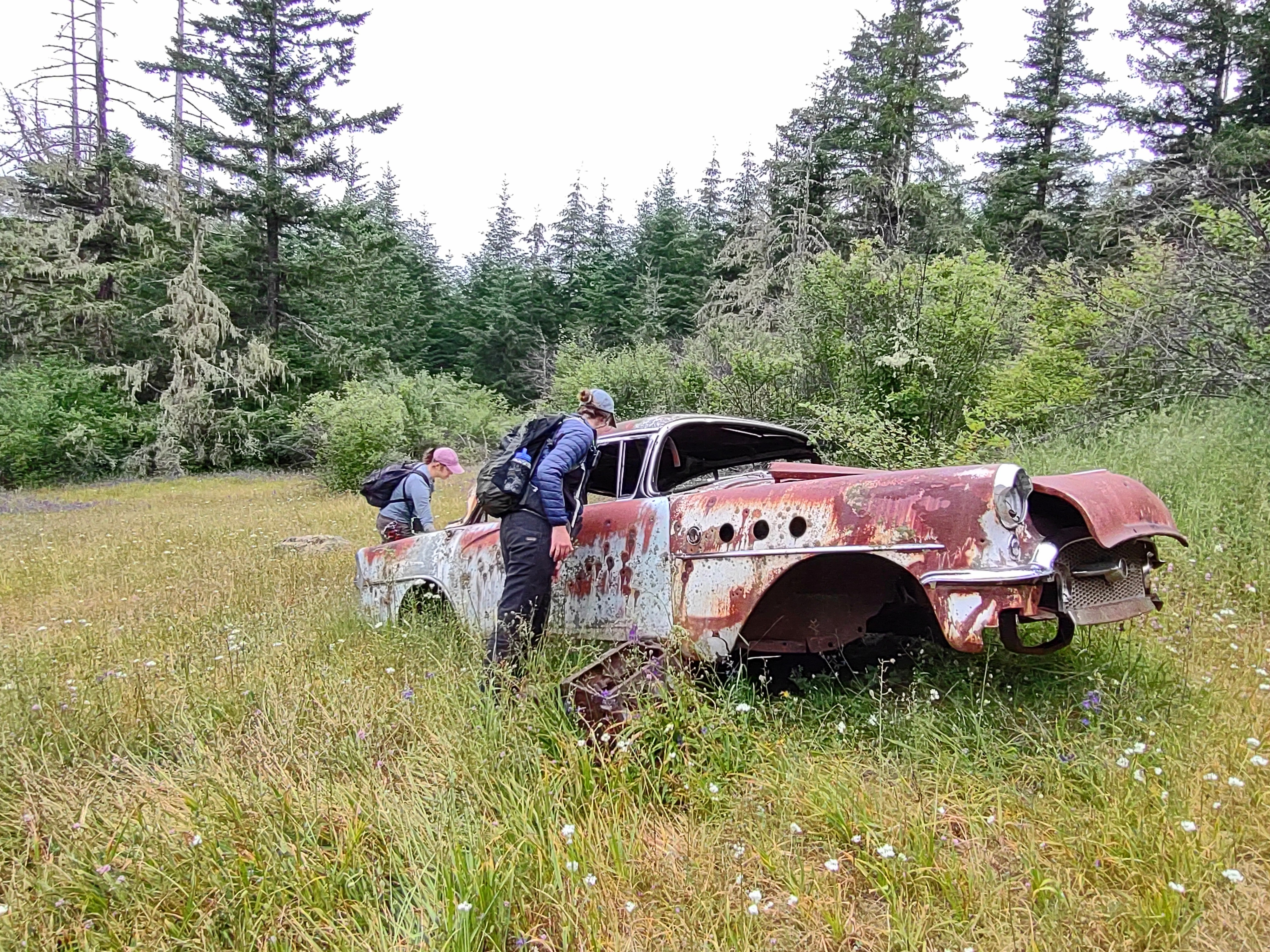
Uphill both ways: the search for prairie-oak ecosystems
By Annie Lamas and Annamarie Pfeifer
August 2022
Imagine hiking up a steep slope through dense Douglas-fir (Pseudotsuga menziesii) forest, with trees growing tall above thickets of thorny shrubs and vining plants. Suddenly, you emerge from the forest into a sunny opening and a carpet of lush green grass, swaths of flowering forbs, and large, majestic oaks. At last, the prairie-oak ecosystem you were hoping to find. As you take in the landscape, it seems you may be the first human to set foot there in many decades, maybe longer. It’s just another day in the office for the Prairie-Oak Inventory (POI) Crew.
Prairie-oak ecosystems are a threatened habitat type. Current studies estimate only 1% of the historical habitat area remains in the Willamette Valley ecoregion of Oregon. This habitat loss is largely driven by fire suppression, land-use change, and the presence and persistence of non-native weeds. To combat this decline, the Bureau of Land Management (BLM) Northwest Oregon District (NWOD) has partnered with IAE, located in Corvallis, Oregon, to find and survey these once nearly ubiquitous habitats. The work that we do will enable the BLM to implement restoration plans to conserve and expand this imperiled habitat.
Conservation and restoration of these sites is crucial to the species that depend on them, such as beautiful and endangered butterflies, critically threatened plants, Columbia white-tailed deer, songbirds, and vital insect pollinator species. Our objective as the POI crew is to be the first boots on the ground, surveying each area for oaks, collecting vegetation data, mapping encroachment from conifers and shrubs, and listening for birds associated with prairie-oak habitat. We use these data to develop priority rankings for each of the sites. These surveys aim to assess more than 400 sites for restoration potential over the life of the project.
This is the third full year of the POI project, and we surveyed roughly 40 sites this season. Over a quarter of them were determined to have high restoration potential. We estimate that we counted nearly 3,000 individual oak trees this season (phew!), 160 of which were old growth. We encountered several neat bird species, including purple martin, acorn woodpecker, and olive-sided flycatcher. The meadows we surveyed often consisted of populations of small camas (Camassia quamash), seep monkeyflower (Erythranthe guttata), and shortspur seablush (Plectritis congesta), with the occasional sprinkling of harsh paintbrush (Castilleja hispida) and hairy cat’s ear (Calochortus tolmiei). We also surveyed a couple of IAE’s active restoration sites, including one that has a successful population of the rare plant shaggy horkelia (Horkelia congesta var. congesta).
Although most days are not glamorous, they are extremely rewarding. Whether it’s the thrill of identifying new plants, listening to birds singing as we walk through the meadow, or mapping incredible old growth oaks, we always discover something unique.
IAE thanks the Bureau of Land Management for funding and collaborating on this project as we work towards conservation of these crucial habitats.
“The creation of a thousand forests is in one acorn”
– Ralph Waldo Emerson
Restoration
Research
Education
Get Involved
Contact
Main Office:
4950 SW Hout Street
Corvallis, OR 97333-9598
541-753-3099
[email protected]
Southwest Office:
1202 Parkway Dr. Suite B
Santa Fe, NM 87507
(505) 490-4910
[email protected]
© 2024 Institute for Applied Ecology | Privacy Policy



